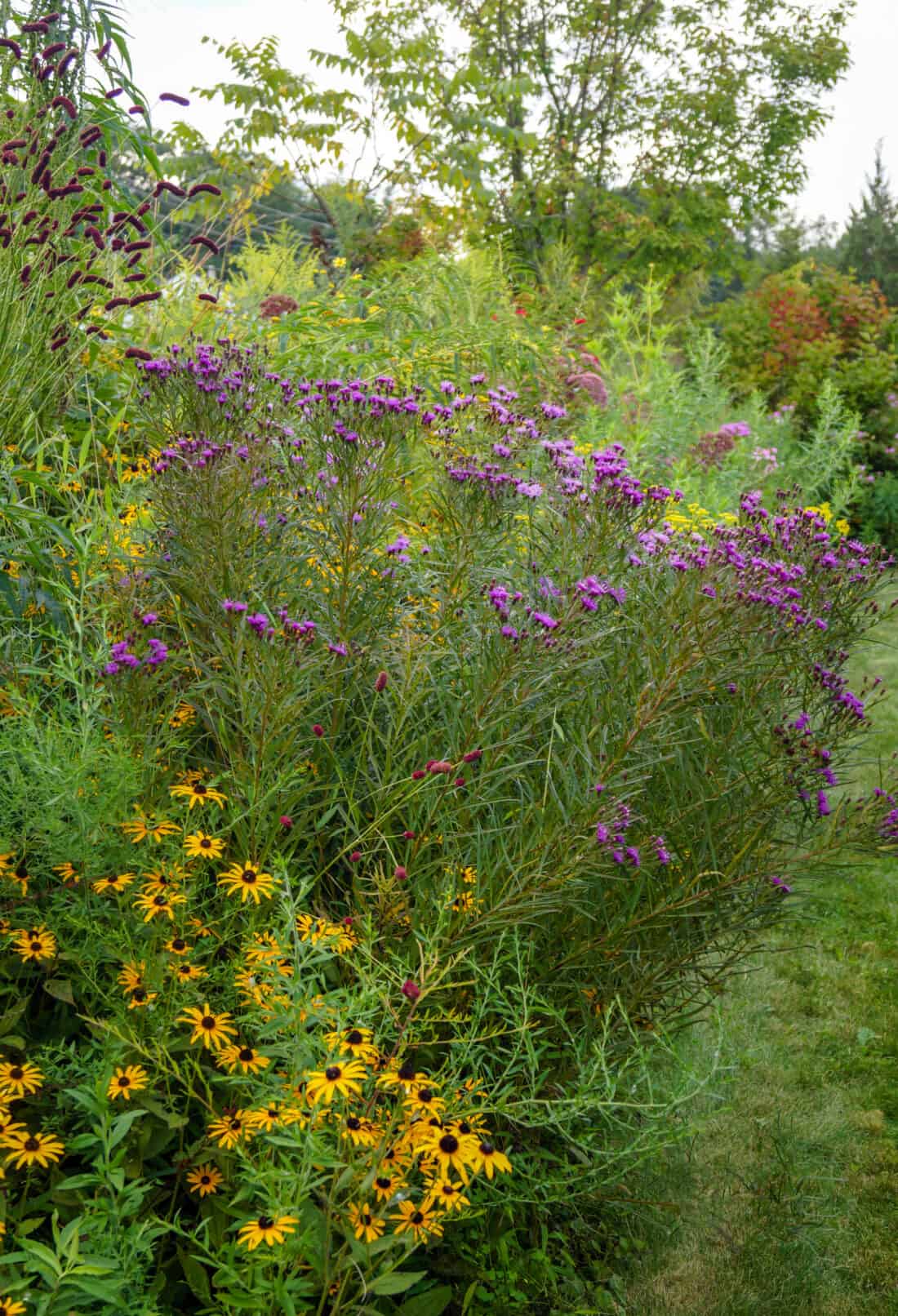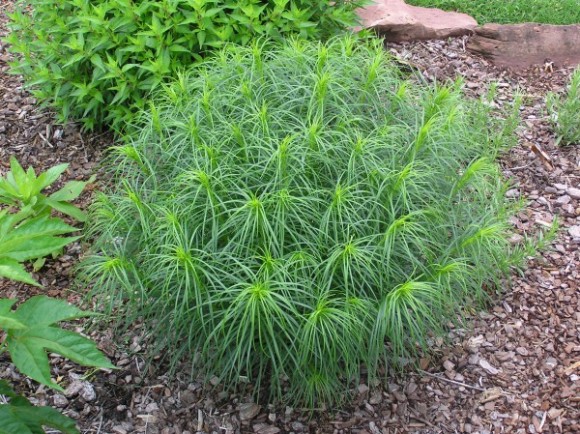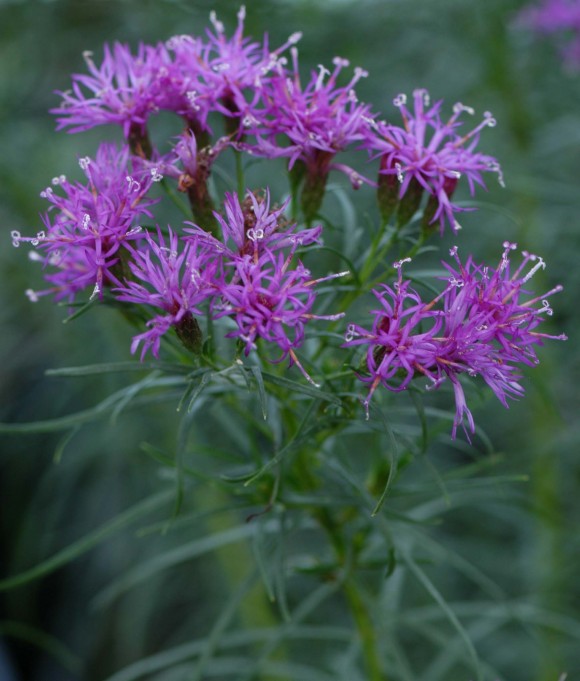Have you ever grown the traditional ironweed? The first time that I met this plant was in 1998. I was amazed that Vernonia noveboracensis could grow to almost 10′ in height. I have since had a special place in my brain for Vernonia because it is a wonderful, native perennial that has striking purple flowers in late summer. But, it is a huge plant. And if the soil is rich and moist, it can seed around the garden. Besides, there aren’t many plants that can step down a 10′ tall (or taller) perennial.

Growing Vernonia lettermannii in Maine and New England
Fast forward to last year when I first started working at CMBG. I was walking through the garden when I was stopped in my tracks by what appeared to be a purple-flowered Amsonia hubrichtii. After looking closer at the flowers, I saw the label that said Vernonia lettermannii ‘iron butterfly.’ My first thought was, wow, this is cool… a small Vernonia. This would be perfect for the pollinator gardens. My second thought was wondering if this plant was named after David Letterman (Nope). It was actually named after George W. Letterman, a reclusive botanist who spent most of his life exploring plants while living in a one-room shack near St. Louis, Missouri.
image by bustaniplantfarm.com

Letterman’s ironweed is native to North America and is found in the wild along rocky flood plains in Arkansas. It can withstand long periods of drought once established but also can deal with occasional flooding. An established clump can reach up to 30″ in height and width. They have a substantially more compact habit than Vernonia noveboracensis and are a fantastic addition to a naturalistic garden.

We cut our plants back after they go dormant each fall.
In late August and into early summer, Vernonia lettermannii is covered with purple flowers. These flowers are sought after by butterflies for nectar. One of the most successful cultivars is V. lettermannii ‘Iron Butterfly,‘ which was introduced by Dr. Allan Armitage from the University of Georgia. This selection is supposed to be more upright than the straight species with even more flowers. We have a clump in our Alfond Children’s Garden. I will definitely keep an eye on it this fall to see how it compares to the species.
As you go around your garden this fall looking for holes to fill in your garden beds, consider Vernonia lettermannii for any open, sunny site.
-Rodney
Update On Ironweed From Rochelle in 2023
A couple of years ago, I added a threadleaf ironweed to my Piet Oudolf-inspired front garden. The bed’s color scheme is generally purple and yellow and the bright purple flowers in late summer have been a perfect addition. I am also very happy with the upright habit and reliable foliage – not everything has been so easy in this challenging location, but ironweed has performed much better than I could ever expect for hot, dry locations. It has been great to add height and texture to this area, where I struggle with dry soils (it is on a bit of a slope and in full sun, and the water just doesn’t stay around).
I’ve been trying to phase out some of the non-native plants in lieu of more native plants.
The first experimental plant has performed so well that I have since added three more in the bed (last year), and this year, when I created a new garden area, I added four more vernonia lettermanii to that area as well. This really has become one of my new favorite plants. I live in borderline USDA zone 5/6 and I have poor soils that are on the rocky side. I’ll be adding this to more and more planting schemes and native landscapes as I have the opportunity.

I love Ironweed…but you’re right…it’s pretty big…and mine always flopped over by the time they bloomed. I was excited to get a variety of Vernonia lettermannii this spring and it’s such an improvement! Love the foliage (almost looks like Amsonia) and it’s just starting to bloom. I may have to find room for a few more 🙂
Right with you, Scott. I definitely want to add more in the future to different projects.
Thanks for the introduction! I am looking for more late flowering perennials.
Debbie, thanks for leaving a comment and good luck with the Vernonia. Solidago, Aster, Chrysanthemum are just a few of the great fall flowering perennials.
What a beautiful plant and a great garden tip. I am always looking for options for my garden.
Thanks, Charlie. Give it shot and let us know how it does in the PNW.